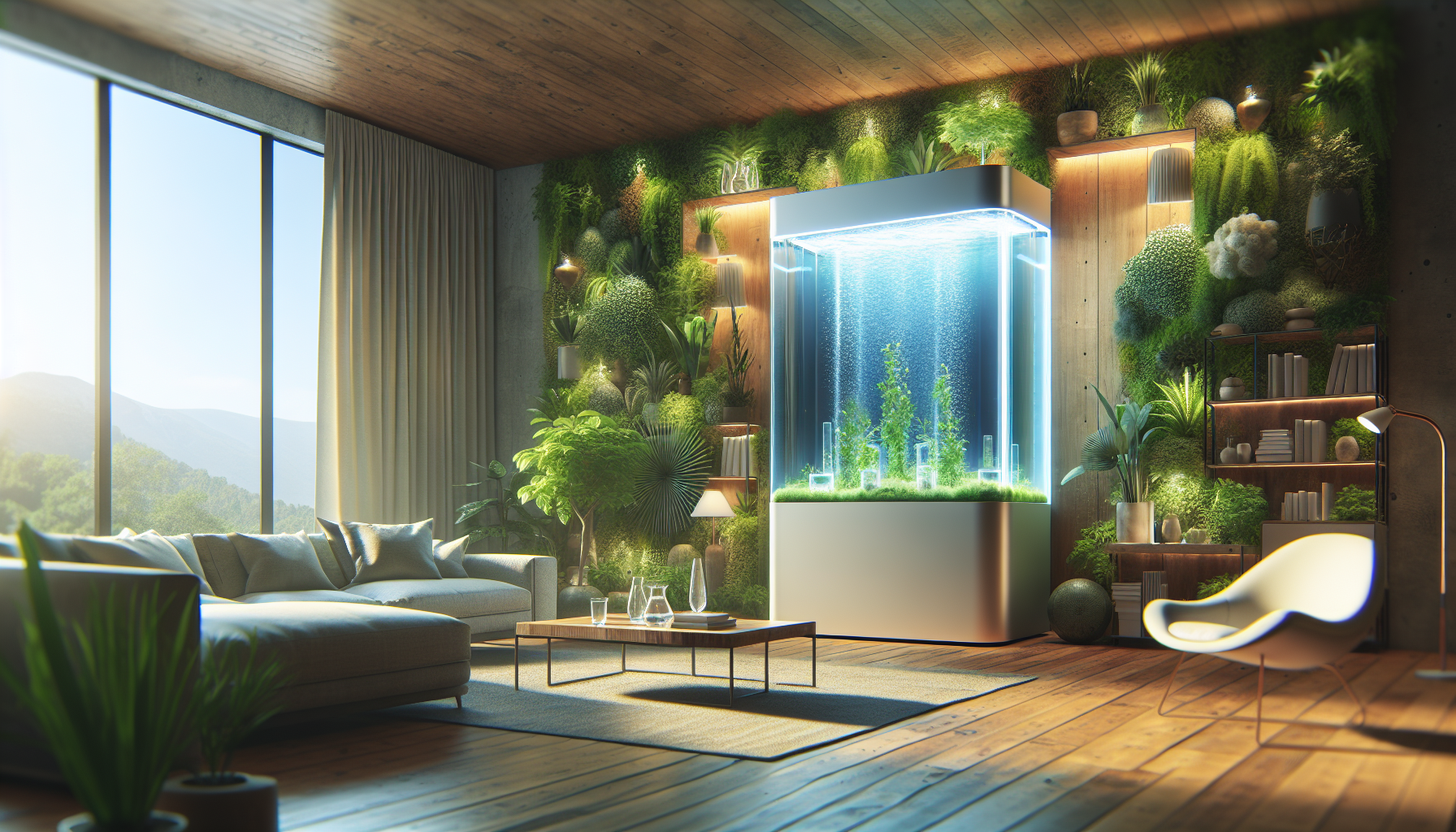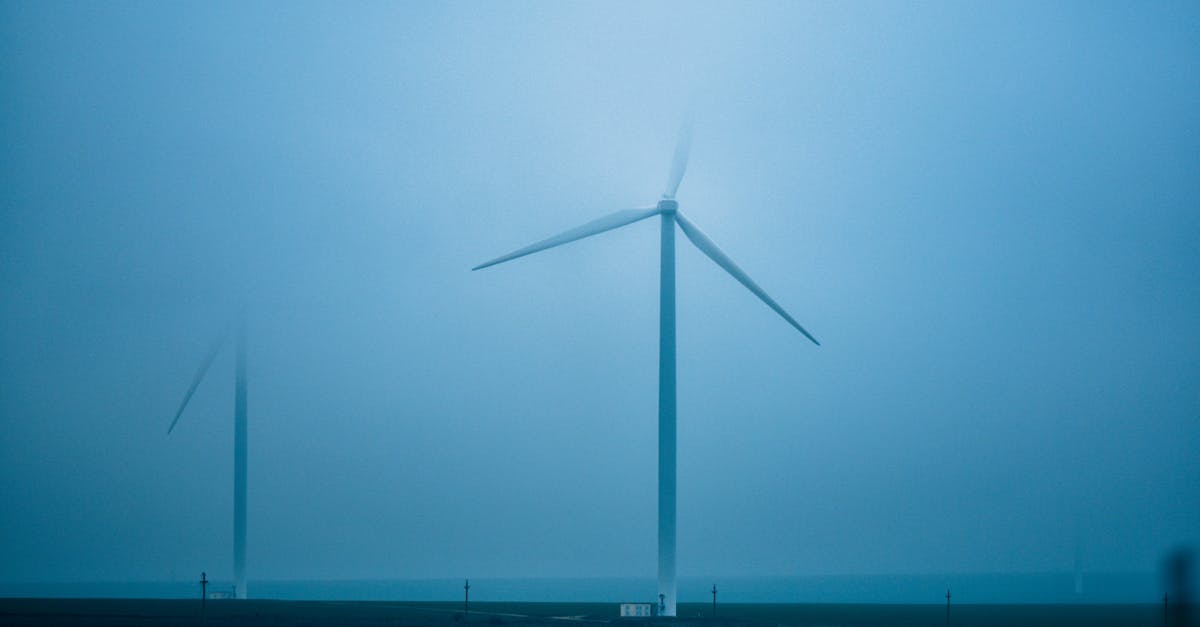Harnessing the Power of Nature: Ensuring Longevity for Atmospheric Water Generators

Unlocking the Secrets of Atmospheric Water Generators: Longevity and Optimizing Lifespan
In the face of growing concerns over water scarcity and environmental sustainability, atmospheric water generators have emerged as a promising solution for providing access to clean, safe drinking water from the very air we breathe. These innovative devices, capable of extracting moisture from the atmosphere and converting it into potable water, offer a potential lifeline in areas where traditional water sources are limited or contaminated.
Thank you for reading this post, don't forget to subscribe!
Understanding the lifespan of atmospheric water generators is crucial for individuals and communities considering investing in this technology. The longevity of these devices is influenced by a combination of factors, including environmental conditions, maintenance practices, and usage patterns. This article delves into these aspects, providing valuable insights into maximizing the lifespan of atmospheric water generators and ensuring their reliable performance for years to come.
As we delve deeper into the factors affecting the longevity of atmospheric water generators, we will explore industry standards and manufacturer estimates to establish a benchmark for comparison, along with practical tips and best practices to prolong the lifespan of these devices. By understanding the common causes of failure and adopting preventative measures, readers can ensure optimal performance and longevity, harnessing the full potential of atmospheric water generators in their pursuit of sustainable water solutions.
1. Longevity of Atmospheric Water Generators
Longevity of Atmospheric Water Generators: Ensuring Reliable Performance
Atmospheric water generators (AWGs) have gained increasing attention as a sustainable and innovative solution for water generation. Understanding their longevity is crucial for individuals and communities considering investing in this technology. The typical lifespan of AWGs can vary depending on several factors, including the specific model, environmental conditions, and maintenance practices.
Generally, well-maintained AWGs can have an expected lifespan of 10 to 15 years or even longer. However, it is important to note that this is just an average estimate, and the actual lifespan can vary. Factors such as the quality of the air, frequency of use, and adherence to maintenance guidelines can all impact the longevity of the device.
To ensure optimal performance and longevity, it is essential to follow the manufacturer’s instructions for maintenance and operation. This includes regular cleaning, filter replacements, and periodic inspections. Additionally, creating a favorable operating environment, such as providing adequate ventilation and protecting the AWG from extreme temperatures and humidity, can also contribute to extending its lifespan.
Factors Affecting Lifespan
Factors Affecting Lifespan: Ensuring Optimal Performance
The lifespan of atmospheric water generators (AWGs) is influenced by a combination of factors, including environmental conditions, maintenance practices, and usage patterns. Understanding these factors can help you maximize the longevity of your AWG and ensure its reliable performance for years to come.
Environmental conditions play a significant role in the lifespan of AWGs. Extreme temperatures, high humidity, and dusty environments can put stress on the components of the AWG, leading to premature wear and tear. It is important to operate AWGs within the recommended temperature and humidity range and to protect them from excessive dust and other environmental hazards.
Maintenance practices are crucial for extending the lifespan of AWGs. Regular cleaning and filter replacements are essential to keep the دستگاه running efficiently and prevent the buildup of scale and other contaminants. Additionally, periodic inspections by a qualified technician can help identify potential issues early on and prevent them from becoming major problems.
Industry Standards and Manufacturer Estimates
Industry Standards and Manufacturer Estimates: Setting Benchmarks for Longevity
Industry standards provide a general framework for the expected lifespan of atmospheric water generators (AWGs). According to the American Society of Heating, Refrigerating and Air-Conditioning Engineers (ASHRAE), the typical lifespan of AWGs is estimated to be around 10 years. However, it is important to note that this is just an average estimate, and the actual lifespan can vary depending on the specific model, environmental conditions, and maintenance practices.
Manufacturer estimates can also provide valuable insights into the expected lifespan of AWGs. Reputable manufacturers typically conduct rigorous testing to determine the durability and reliability of their products. By referring to the manufacturer’s specifications, you can get a better understanding of the expected lifespan of a particular AWG model.
It is important to keep in mind that industry standards and manufacturer estimates are just benchmarks for comparison. The actual lifespan of your AWG may vary depending on your specific circumstances. By following the manufacturer’s instructions for maintenance and operation, and by creating a favorable operating environment, you can help extend the lifespan of your AWG and ensure its reliable performance for many years to come.
2. Tips to Maximize Lifespan
Tips to Maximize Lifespan: Ensuring Optimal Performance and Longevity
Extending the lifespan of your atmospheric water generator (AWG) is crucial for ensuring a reliable and cost-effective source of clean water. By following a few simple tips and best practices, you can help your AWG perform at its best for many years to come.
Regular maintenance is essential for maximizing the lifespan of your AWG. This includes cleaning the filters regularly, as well as periodically inspecting and cleaning the unit’s components. By keeping your AWG clean and well-maintained, you can prevent the buildup of scale and other contaminants, which can reduce the efficiency and lifespan of the unit.
Creating a favorable operating environment is also important for extending the lifespan of your AWG. Make sure to place the unit in a well-ventilated area with plenty of airflow. Avoid placing the unit in direct sunlight or near sources of heat, as this can shorten the lifespan of the unit’s components. Additionally, protect the unit from excessive dust and other environmental hazards.
Proper Maintenance and Cleaning
Proper Maintenance and Cleaning: Ensuring Efficient Operation
Regular maintenance and cleaning are essential for keeping your atmospheric water generator (AWG) operating efficiently and extending its lifespan. One of the most important maintenance tasks is to clean and replace the filters regularly. The filters in your AWG trap impurities from the air, such as dust, pollen, and other particles. Over time, these impurities can build up and clog the filters, reducing the efficiency of the AWG and potentially damaging its components.
To ensure optimal performance, it is recommended to clean the filters in your AWG every 1-2 months, depending on the specific model and the air quality in your area. To clean the filters, simply remove them from the AWG and rinse them with clean water. If the filters are heavily clogged, you may need to replace them.
In addition to cleaning the filters, it is also important to periodically clean the other components of your AWG, such as the condenser and evaporator coils. These coils can collect dust and other debris over time, which can reduce the efficiency of the AWG and lead to premature failure. To clean the coils, you can use a soft brush or a vacuum cleaner with a soft brush attachment.
Optimal Environmental Conditions
Optimal Environmental Conditions: Ensuring Peak Performance
To maximize the lifespan and efficiency of your atmospheric water generator (AWG), it is important to operate it in an environment that meets certain criteria. Temperature, humidity, and air quality all play a role in the performance and longevity of AWGs.
Temperature: AWGs operate most efficiently within a specific temperature range, typically between 5°C and 35°C (41°F and 95°F). When the temperature is too high or too low, the AWG may not be able to extract water from the air as effectively, and its components may be more likely to fail.
Humidity: AWGs are designed to extract water from the air, so humidity is an important factor to consider. AWGs perform best in environments with relative humidity levels between 30% and 60%. When the humidity is too low, the AWG may not be able to extract enough water from the air to operate efficiently. When the humidity is too high, the AWG may have to work harder to extract water from the air, which can reduce its efficiency and lifespan.
Air quality: The quality of the air in your environment can also affect the performance and lifespan of your AWG. AWGs are designed to filter out impurities from the air, but excessive levels of dust, pollen, and other particles can clog the filters and reduce the efficiency of the AWG. If the air quality in your area is poor, you may need to clean the filters in your AWG more frequently.
Appropriate Usage Patterns
Appropriate Usage Patterns: Ensuring Longevity
To extend the lifespan of your atmospheric water generator (AWG) and ensure its optimal performance, it is important to follow appropriate usage patterns. Here are a few key things to keep in mind:
Avoid overloading: AWGs have a limited capacity for water production, and overloading the unit can put strain on its components and reduce its lifespan. It is important to choose an AWG that is appropriately sized for your needs, and to avoid operating the unit at full capacity for extended periods of time.
Ensure adequate ventilation: AWGs need adequate ventilation to operate efficiently. Make sure to place the unit in a well-ventilated area with plenty of airflow. Avoid placing the unit in enclosed spaces or near objects that could block the airflow.
Follow the manufacturer’s instructions: Each AWG model is different, so it is important to follow the manufacturer’s instructions for proper operation and maintenance. The manufacturer’s instructions will provide specific guidance on how to use the AWG safely and effectively, and will help you avoid common problems that could shorten the lifespan of the unit.
3. Common Causes of Failure
Common Causes of Failure: Troubleshooting and Prevention
While atmospheric water generators (AWGs) are generally reliable appliances, they can experience problems like any other machine. Here are some of the most common causes of failure in AWGs:
Component malfunctions: AWGs are made up of a number of components, including fans, compressors, and sensors. Any of these components can malfunction, which can lead to a decrease in performance or even a complete failure of the AWG.
Environmental factors: AWGs are designed to operate within a certain range of environmental conditions. If the AWG is operated outside of these conditions, it may experience problems. For example, extreme temperatures or humidity can damage the AWG’s components or reduce its efficiency.
Usage-related issues: The way that an AWG is used can also affect its lifespan. For example, overloading the AWG or failing to clean the filters regularly can shorten the AWG’s lifespan.
By understanding the common causes of failure in AWGs, you can take steps to prevent these problems from occurring. For example, you can make sure to operate the AWG within the recommended environmental conditions, and you can clean the filters regularly.
Component Malfunctions
Component Malfunctions: Identifying and Addressing Issues
Atmospheric water generators (AWGs) are made up of a number of components, including fans, compressors, and sensors. Any of these components can malfunction, which can lead to a decrease in performance or even a complete failure of the AWG.
Fans: Fans are used to circulate air through the AWG. If a fan malfunctions, it can reduce the AWG’s ability to extract water from the air. This can lead to a decrease in water production and an increase in energy consumption.
Compressors: Compressors are used to compress the air in the AWG. This compression process helps to extract water from the air. If a compressor malfunctions, it can lead to a decrease in water production and an increase in energy consumption.
Sensors: Sensors are used to monitor the AWG’s performance and to adjust its operation accordingly. If a sensor malfunctions, it can cause the AWG to operate outside of its optimal parameters. This can lead to a decrease in water production, an increase in energy consumption, or even damage to the AWG’s components.
By understanding the potential malfunctions of the various components in an AWG, you can be better prepared to identify and address these issues. This can help to extend the lifespan of your AWG and ensure that it continues to operate at peak performance.
Environmental Factors
Environmental Factors: Understanding Their Impact
Atmospheric water generators (AWGs) are designed to operate within a certain range of environmental conditions. If the AWG is operated outside of these conditions, it may experience problems. For example, extreme temperatures or humidity can damage the AWG’s components or reduce its efficiency.
Extreme temperatures: AWGs are designed to operate within a specific temperature range. If the AWG is operated outside of this range, it can damage the AWG’s components or reduce its efficiency. For example, operating the AWG in very cold temperatures can cause the AWG’s compressor to freeze up. Operating the AWG in very hot temperatures can cause the AWG’s components to overheat.
Humidity: AWGs are also sensitive to humidity. If the humidity is too low, the AWG will not be able to extract enough water from the air. If the humidity is too high, the AWG will have to work harder to extract water from the air, which can reduce its efficiency and lifespan.
Dust: Dust can also affect the performance of AWGs. Dust can clog the AWG’s filters, which can reduce the AWG’s ability to extract water from the air. Dust can also damage the AWG’s components, such as the fans and compressors.
By understanding how environmental factors can affect the performance of AWGs, you can take steps to protect your AWG from these factors. For example, you can make sure to operate the AWG within the recommended temperature and humidity range, and you can clean the AWG’s filters regularly.
Usage-Related Issues
Usage-Related Issues: Avoiding Common Pitfalls
In addition to environmental factors, the way that an AWG is used can also affect its lifespan. Here are some common usage-related issues that can shorten the lifespan of AWGs:
Improper maintenance: AWGs require regular maintenance to keep them operating at peak performance. This includes cleaning the filters, checking the water level, and inspecting the unit for any signs of damage. If an AWG is not properly maintained, it can lead to a decrease in performance or even a complete failure of the unit.
Overloading: AWGs have a limited capacity for water production. If the AWG is overloaded, it can put strain on the unit’s components and reduce its lifespan. It is important to choose an AWG that is appropriately sized for your needs, and to avoid overloading the unit.
Power fluctuations: Power fluctuations can also damage AWGs. If the power supply to the AWG is not stable, it can cause the unit to shut off or malfunction. This can damage the AWG’s components and reduce its lifespan. It is important to make sure that the AWG is connected to a stable power supply.
By understanding these common usage-related issues, you can take steps to avoid them and extend the lifespan of your AWG.
4. Conclusion: Longevity and Care for Optimal Performance
Conclusion: Ensuring Longevity and Optimal Performance
Atmospheric water generators (AWGs) offer a promising solution for providing access to clean, safe drinking water in areas where traditional water sources are limited or contaminated. Understanding the factors that affect the longevity of AWGs is crucial for maximizing their lifespan and ensuring efficient water generation.
Proper care and maintenance are essential for extending the lifespan of AWGs. This includes regular cleaning and filter replacements, as well as periodic inspections by a qualified technician. Additionally, creating a favorable operating environment, such as providing adequate ventilation and protecting the AWG from extreme temperatures and humidity, can also contribute to its longevity.
By following the manufacturer’s instructions for maintenance and operation, and by taking steps to prevent common causes of failure, you can ensure that your AWG performs at its best for many years to come. This will not only save you money on repairs and replacements, but it will also ensure that you have a reliable source of clean water for your family and community.
Expected Lifespan and Factors Affecting It
Expected Lifespan and Factors Affecting It: A Comprehensive Overview
The typical lifespan of an atmospheric water generator (AWG) can vary depending on several factors, including the specific model, environmental conditions, and maintenance practices. Generally, well-maintained AWGs can have an expected lifespan of 10 to 15 years or even longer. However, it is important to note that this is just an average estimate, and the actual lifespan can vary.
Factors that can influence the longevity of AWGs include:
- Environmental conditions: AWGs are designed to operate within a certain range of environmental conditions, including temperature, humidity, and air quality. Operating the AWG outside of these conditions can put strain on its components and reduce its lifespan.
- Maintenance practices: Regular maintenance is essential for extending the lifespan of AWGs. This includes cleaning the filters, checking the water level, and inspecting the unit for any signs of damage. If an AWG is not properly maintained, it can lead to a decrease in performance or even a complete failure of the unit.
- Usage patterns: The way that an AWG is used can also affect its lifespan. For example, overloading the AWG or failing to clean the filters regularly can shorten the AWG’s lifespan.
Maximizing Lifespan through Proper Care
Maximizing Lifespan through Proper Care: Ensuring Long-Lasting Performance
To extend the lifespan of your atmospheric water generator (AWG) and ensure its optimal performance, it is essential to follow proper care guidelines. Here are a few key things to keep in mind:
Follow maintenance guidelines: Each AWG model is different, so it is important to follow the manufacturer’s instructions for proper maintenance. The manufacturer’s instructions will provide specific guidance on how to clean the filters, check the water level, and inspect the unit for any signs of damage. By following these instructions, you can help to prevent problems that could shorten the lifespan of your AWG.
Use the device appropriately: How you use your AWG can also impact its lifespan. For example, overloading the AWG or failing to clean the filters regularly can put strain on the unit’s components and reduce its lifespan. It is important to use the AWG according to the manufacturer’s instructions and to avoid any actions that could damage the unit.
Create a suitable operating environment: The environment in which you operate your AWG can also affect its lifespan. AWGs are designed to operate within a certain range of environmental conditions, including temperature, humidity, and air quality. Operating the AWG outside of these conditions can put strain on its components and reduce its lifespan. It is important to create a suitable operating environment for your AWG by following the manufacturer’s instructions.
Additional Resources and External Links
Additional Resources and External Links: Delving Deeper
To further your exploration of atmospheric water generators (AWGs) and their longevity, here are some valuable resources and external websites:
-
International Association of Desalination and Water Treatment (IDA): https://idadesalination.org/ The IDA is a global non-profit organization that promotes the advancement of desalination and water treatment technologies. Their website provides a wealth of information on AWGs, including technical papers, case studies, and industry news.
-
American Society of Heating, Refrigerating and Air-Conditioning Engineers (ASHRAE): https://www.ashrae.org/ ASHRAE is a professional organization that focuses on the design and operation of heating, ventilation, air conditioning, and refrigeration systems. Their website includes resources on AWGs, such as standards and guidelines for their installation and maintenance.
-
National Renewable Energy Laboratory (NREL): https://www.nrel.gov/ NREL is a U.S. Department of Energy laboratory that conducts research on renewable energy technologies, including AWGs. Their website provides access to technical reports, data, and other resources on AWGs.
What is the average lifespan of an atmospheric water generator?
The average lifespan of an AWG can vary depending on the specific model, environmental conditions, and maintenance practices. Generally, well-maintained AWGs can have an expected lifespan of 10 to 15 years or even longer.
What are some factors that can affect the lifespan of an AWG?
Factors that can affect the lifespan of AWGs include environmental conditions, maintenance practices, and usage patterns. Operating the AWG outside of its recommended environmental conditions, failing to perform regular maintenance, or overloading the unit can all shorten its lifespan.
What are some tips for extending the lifespan of an AWG?
To extend the lifespan of your AWG, follow the manufacturer’s instructions for maintenance, use the device appropriately, and create a suitable operating environment. This includes cleaning the filters regularly, checking the water level, inspecting the unit for any signs of damage, and operating the AWG within its recommended temperature and humidity range.




